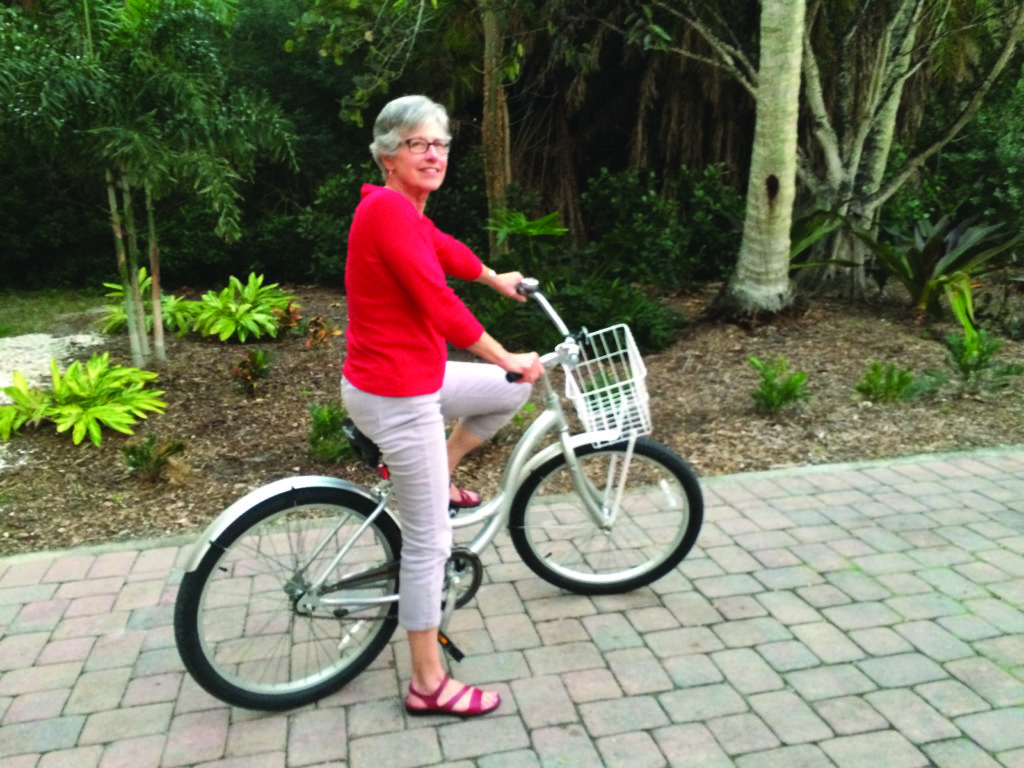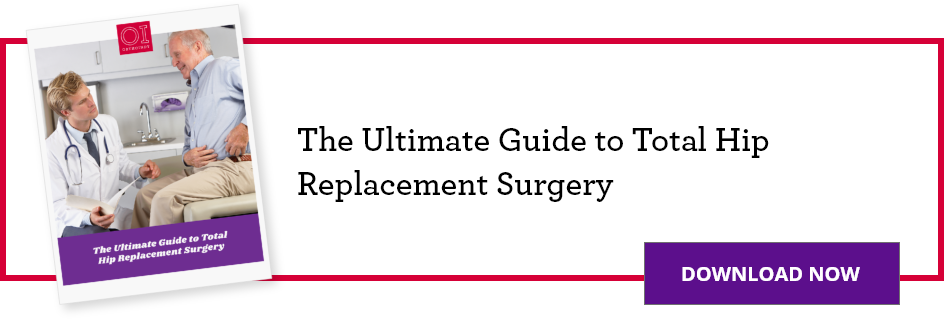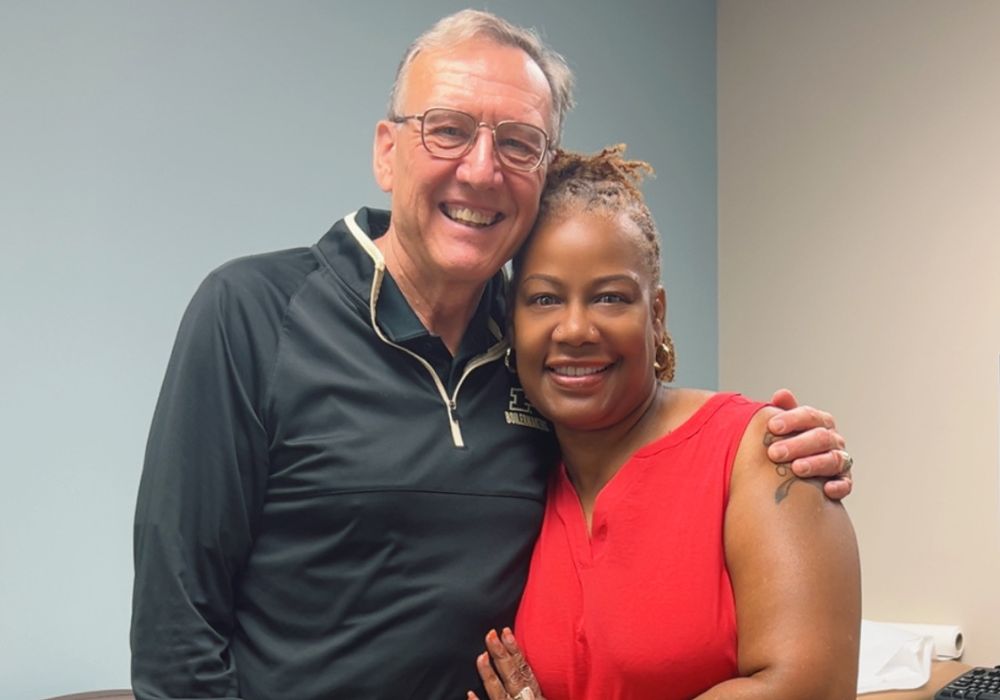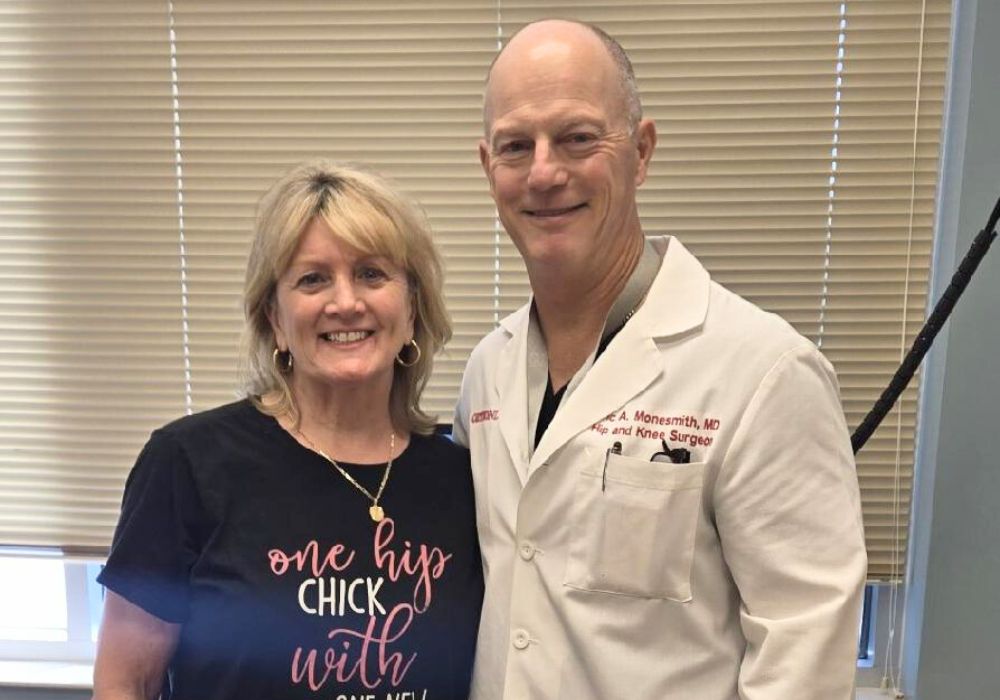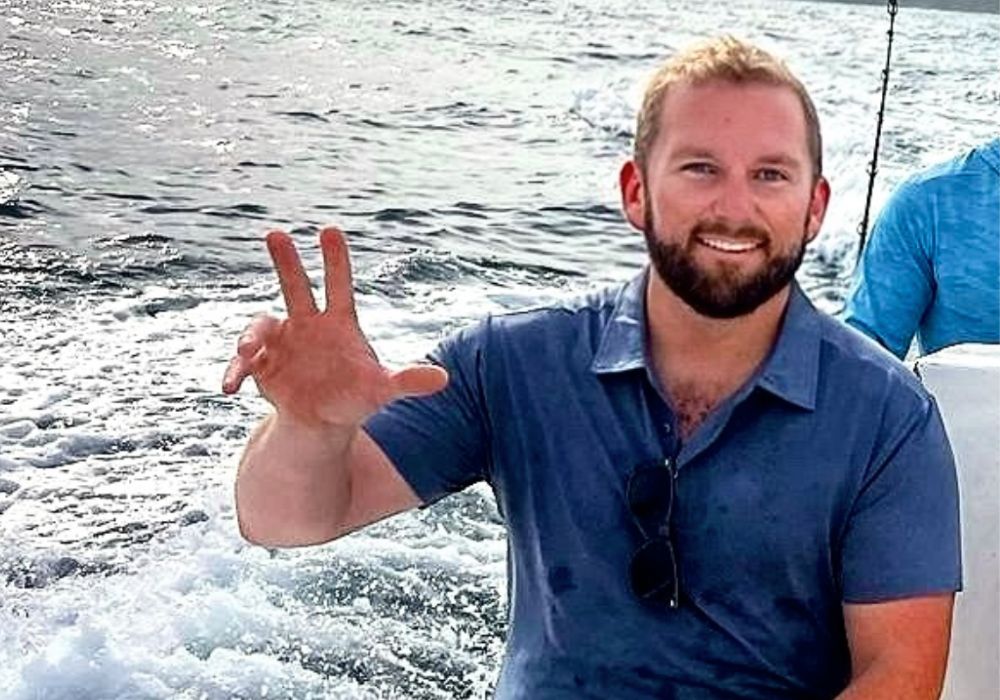This post is part of the Ultimate Guide to Total Hip Replacement
For 10 years Sarah Smith desperately sought answers to the pain she was experiencing in her body. She met with a variety of physicians and tried physical therapy, but nothing was taking the pain away and no one had given her a diagnosis.
“I had difficulty putting on shoes and socks, going upstairs, walking and standing without lower back pain,” said Sarah. “The pain would continually increase throughout the day.”
On the recommendation of her physical therapist she decided to visit OrthoIndy. Sarah’s brother had a hip replacement from Dr. Eric Monesmith, OrthoIndy total joint specialist and he was feeling much better so she decided to start there. A physician had never suggested an X-ray of Sarah’s hips because most of her pain was in her back; however, Dr. Monesmith did and took one look at her X-ray and determined Sarah needed both hips replaced.
The diagnosis
“After reviewing my X-rays Dr. Monesmith asked, ‘which hip do you want to do first?’ It was a relief to know I finally had a diagnosis,” said Sarah.
Sarah’s back pain was due to gradual arthritis of the hip joint and bone collapse. The pain had slowly worsened over a ten-year period.
“Sarah had a congenital condition, femoroacetabular impingement to be specific, that caused both her hips to wear out and develop arthritis. This is a slow degenerative process, and had been causing her pain for many years before she came to see me,” said Dr. Monesmith.
Hip replacement surgery
Sarah had her left hip replaced in June 2015 and her right hip replaced four months later.
“I found the entire staff, including Dr. Eric Monesmith, to be caring and very professional from the diagnosis, operation and the recovery process,” said Sarah. “All of my questions were answered immediately and explained to my satisfaction.”
Sarah partially credits her quick recovery to DNA testing, which Dr. Monesmith uses to determine the best medication route for patients after surgery. This test concludes how a patient’s genetic makeup can affect how they metabolize all different types of medications.
How did the DNA test help?
“I attribute my awareness and non-drowsy feeling five hours after surgery to the medication I was given as a result of the DNA testing,” said Sarah.
“It made all the difference of not feeling nauseous and sleepy the day of surgery and during the recuperation period. I have had multiple surgeries and I’ve never felt so good after an operation.”
The DNA test is a simple cheek swab, which is done in Dr. Monesmith’s office the day a patient decides to have surgery. The swab is then sent to a lab and results come back in a few days. It’s a one time test where the results are good for life and a patient can share it with future physicians when surgery may be necessary.
“I use the DNA testing primarily to help us determine which pain medicine will work best in a given patient,” said Dr. Monesmith. “I have used this test in over 500 patients at this point, and we know that nearly 45 percent of patients demonstrate genetic abnormalities regarding the metabolism of typical pain meds. Additionally, another part of the test helps determine the risk of blood clots after surgery.”
Right now the DNA testing is not typically covered by insurance and is an out of pocket expense for most patients. However, most patients have shared Sarah’s appreciation for the test.
“I always told doctors my body could not tolerate much pain medication. Now I have proof if I ever need a future surgery. I was given a copy of the DNA results so I could share the information with my other doctors,” said Sarah. “What a blessing it is to know what types of medications my body can tolerate. I hope more physicians will listen to their patients instead of the pharmaceutical industry.”
Recovery
Sarah is now active again and living life to its fullest. She is able to ride her bike, garden and even touch her toes again. Sarah’s friends noticed how she had stopped limping and could walk up stairs with ease again. Additionally, Sarah and her husband plan to spend time traveling and continue their active lifestyle for many years.
“Thanks to Dr. Monesmith I have my life back,” said Sarah. “I am also very grateful to all of the wonderful people who represent OrthoIndy. They are sincerely dedicated to helping individuals regain their mobility and quality of life. Thank you for restoring mine.”
To schedule an appointment with Dr. Monesmith please call 317.884.5166 or learn more about total hip replacement surgery at OrthoIndy.
Schedule an appointment
Your well-being is important to us. Click the button below or call us to schedule an appointment with one of our orthopedic specialists. If your injury or condition is recent, you can walk right into one of our OrthoIndy Urgent Care locations for immediate care. For rehabilitation and physical therapy, no referral is needed to see one of our physical therapists.


